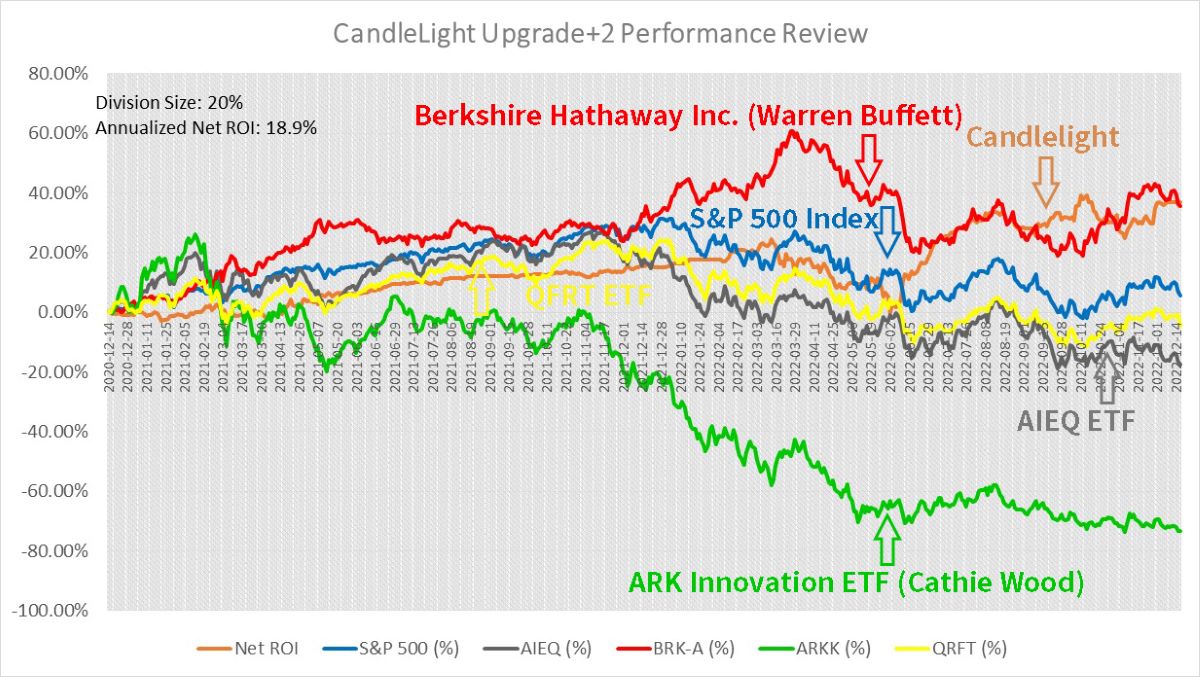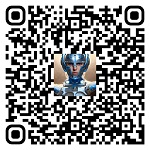AI versus Human Traders:
Comparing Performance and Identifying Strengths and Weaknesses
|
|
Stock trading has always been a battle of wits, with humans pitted against
each other in the never-ending pursuit of profits. But now, a new contender
has entered the arena: Artificial Intelligence (AI). With its lightning-fast
speed, data-crunching abilities, and 24/7 operation, AI trading robots are
challenging human traders in ways never seen before.
Before December 2022, no one believed that machines could have conversations with humans just like real people until chatGPT emerged, leaving everyone amazed: Artificial Intelligence has already become so powerful. In the financial field, not many people believe that machines can beat humans in securities trading, and with the rapid development of AI technology, who knows when a killer technology like chatGPT will appear in the stock market and shock humans again? If we don't prepare ahead of time, once another more powerful AI technology emerges in the market, it won't be as easygoing and lighthearted as just chatting; it is likely to make many people cry and faint.
But don’t worry, human
traders, you’re not going down without a fight! In this blog, we’ll compare
the pros and cons of AI and human traders, and determine once and for all,
who truly reigns supreme in the stock market.
Advantages of AI
Trading Robots
Speed: AI trading robots are able to process massive
amounts of data in real-time, allowing them to quickly analyze market trends
and make investment decisions. This speed advantage allows AI systems to
respond to market developments faster than human traders, increasing the
potential for profits.
Accuracy: AI systems use complex algorithms and
statistical models to analyze data, making their predictions much more
accurate and consistent than those made by human traders. This leads to more
rational and objective investment decisions, reducing the risk of impulsive
or emotional choices.
24/7 operation: AI trading robots can operate 24
hours a day, 7 days a week, without the need for rest. This allows them to
take advantage of market developments and investment opportunities at any
time, even outside of normal trading hours.
Consistency: AI systems are
not subject to emotional biases that often influence human decision-making.
This leads to a more consistent approach to investment decisions, reducing
the risk of irrational or impulsive choices.
Data analysis: AI trading
robots are able to analyze vast amounts of data, including financial and
market data, economic indicators, and global developments. This allows them
to make informed investment decisions based on a broad range of data,
increasing the potential for profits.
Backtesting: AI systems can use
historical data to test investment strategies and make predictions about
future market trends. This allows traders to evaluate the potential success
of a particular strategy before putting real money on the line.
Portfolio
management: AI trading robots can be used to manage portfolios,
automatically rebalancing portfolios based on market developments and
investment goals. This allows traders to optimize their portfolios and
maximize profits with minimal effort.
Drawbacks of AI Trading Robots
Lack of creativity: AI systems rely on algorithms and pre-programmed
rules to make investment decisions. While this leads to more rational and
objective decision-making, it also means that AI systems lack the creativity
and intuition that can sometimes lead human traders to make successful
investments.
Dependence on data: AI systems are only as good as the data
they are trained on. If the data used to train the AI system is incorrect or
outdated, the investment decisions made by the AI system will be based on
inaccurate information.
Over-reliance on technology: Some traders may
become too dependent on AI systems, losing their own investment skills and
knowledge in the process. This could lead to a lack of understanding of the
markets and investment strategies, reducing the potential for profits.
Cost: AI systems can be expensive to develop and implement, and may require
ongoing maintenance and upgrades. This can be a significant barrier for
smaller traders and investors who may not have the resources to invest in
this technology.
Limited understanding: AI systems can be complex and
difficult to understand, even for experienced traders. This can make it
difficult for traders to assess the performance of the AI system and make
informed investment decisions.
Potential for errors: AI systems, like any
technology, are not immune to errors and malfunctions. This can lead to
incorrect investment decisions and potential losses, which could be costly
for traders and investors.
Black Box problem: AI systems can sometimes
make investment decisions that are difficult to explain, even to experienced
traders. This “black box” problem can lead to a lack of trust in the AI
system and may prevent traders from fully utilizing its potential.
There
are some AI-Powered stock trading systems running ETFs are really working in
markets, such as AIEQ and QRFT. And more and more AI-Enhanced systems are
jointing the the party. For example, after 2 years forward testing,
Candlelight’s Growth Rate is neck and neck with Buffett’s performance, with
decisions made 100% by machines, more details:
Two Years, 100+ Sets of Testing
Results Confirm: Machines Can Beat Human Aces in Stock Market!

Advantages of Human Traders
Intuition: Human traders are capable of
using their intuition, experience, and judgement to make investment
decisions. This can be especially valuable in situations where data and
algorithms may not be enough to fully understand market developments and
trends.
Flexibility: Human traders are capable of adapting to changing
market conditions and investment strategies. They can quickly pivot their
investment strategies based on new information and developments, allowing
them to take advantage of new opportunities.
Emotional intelligence:
Human traders are able to understand and analyze the emotions and
motivations of other market participants. This can be especially valuable in
predicting market developments and making investment decisions.
Creativity: Human traders are capable of using their creativity and
outside-the-box thinking to develop new investment strategies and approach
markets in unique ways. This can lead to more innovative and profitable
investment decisions.
Understanding of market context: Human traders have
a broader understanding of market context, including economic indicators,
geopolitical developments, and industry trends. This allows them to make
informed investment decisions that take into account a wide range of
factors.
Human judgement: Human traders are capable of using their
judgement and critical thinking skills to assess market trends and make
investment decisions. This can be especially valuable in situations where
the data is conflicting or incomplete.
Independent decision-making: Human
traders are able to make investment decisions independently, without relying
on pre-programmed algorithms or rules. This allows them to respond to market
developments and investment opportunities in real-time, increasing the
potential for profits.
Drawbacks of Human Traders
Emotional
biases: Human traders are prone to emotional biases, such as fear and greed,
that can cloud their judgement and lead to poor investment decisions. This
can result in missed opportunities or significant losses.
Limited data
processing capacity: Human traders have a limited ability to process large
amounts of data and information. This can make it difficult for them to keep
up with the rapidly changing market developments and make informed
investment decisions.
Overconfidence: Human traders can sometimes become
overconfident in their investment decisions, leading them to take excessive
risks and make poorly thought out investment decisions.
Fatigue: Human
traders can become fatigued and less effective over long periods of time,
leading to mistakes and poor investment decisions.
Lack of objectivity:
Human traders may be influenced by their personal opinions, beliefs, and
biases, leading to subjective and potentially incorrect investment
decisions.
Short-term focus: Human traders can sometimes become focused
on short-term gains, rather than considering the long-term potential of
investments. This can lead to missed opportunities for long-term growth and
stability.
Inability to execute complex strategies: Human traders may not
have the expertise or technical skills to execute complex investment
strategies, such as algorithmic trading, which can limit their ability to
maximize profits.
In conclusion, both AI and human traders have their own
strengths and weaknesses in the stock market. While AI systems offer speed,
accuracy, and 24/7 operation, they lack creativity and can be limited by
their dependence on data. On the other hand, human traders offer intuition,
flexibility, and emotional intelligence, but are prone to emotional biases
and can sometimes make impulsive decisions. In the end, it seems that the
best approach to stock trading is a combination of both AI and human
traders, utilizing the strengths of each approach to achieve maximum
profits. So, let’s raise a glass to the future of stock trading, where
robots and humans work together in perfect harmony… until the robots take
over, of course.
PS. We are trying AI Trading based on Machine
Learning technologies, please take a look at our experiment records:
Two Years, 100+ Sets of Testing
Results Confirm: Machines Can Beat Human Aces in Stock Market! |


|

Free Tutorial
Share
|
|
|
|